Abstract
The influence of pulmonary edema, hydrocortisone, immunization against Pasteurella hemolytica and concurrent infection with parainfluenza-3 virus upon pulmonary clearance of aerosolized P. hemolytica was studied in 31 calves. Following the various treatments calves were challenged with an aerosol of P. hemolytica. One control calf was killed immediately after the aerosol and the numbers of bacteria in the lung taken as 100%. Two calves were killed four hours after challenge and the numbers of bacteria in the lungs were compared to the 100% of the control calf. The result was the percentage clearance of bacteria at four hours.
Pulmonary edema was induced by three different methods: by an aerosol of histamine, by intravenous injection of endotoxin and by intravenous injection of croton oil emulsion. The edema impaired the clearance of P. hemolytica, which was reflected in high numbers of P. hemolytica present in the lungs at four hours after challenge: 260% after histamine, 300% and 400% after endotoxin and 92% after croton oil.
Six days of treatment of four calves with high doses of hydrocortisone acetate produced inconsistent results: two calves treated with a higher daily dose (36 mg/kg) had normal clearance whereas two calves treated with a lower dose had pulmonary edema and displayed lowered clearance with 111% and 31% respectively of P. hemolytica retained in the lungs four hours after challenge.
Immunization of calves by three different methods, a subcutaneously injected bacterin of P. hemolytica (2 calves), single aerosol (2 calves) and four aerosols (4 calves) of live P. hemolytica was reflected in an accelerated pulmonary clearance of P. hemolytica (with a mean of 1.55% of bacteria retained at four hours).
Concurrent infection with parainfluenza-3 virus did not lower the clearance of P. hemolytica in the lungs of 12 calves over 15 days except on the first day following the exposure to parainfluenza-3 virus. These calves had hemagglutinating antibodies against P. hemolytica before exposure.
Full text
PDF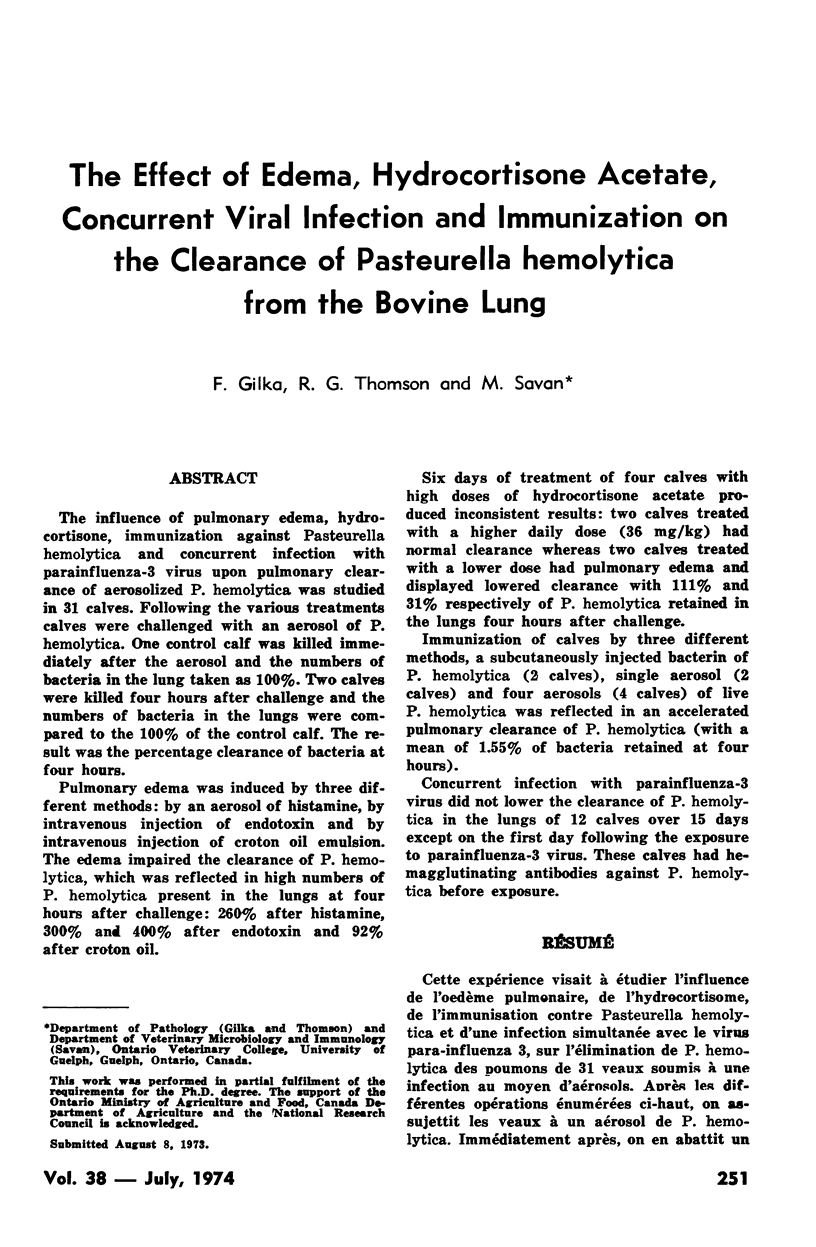
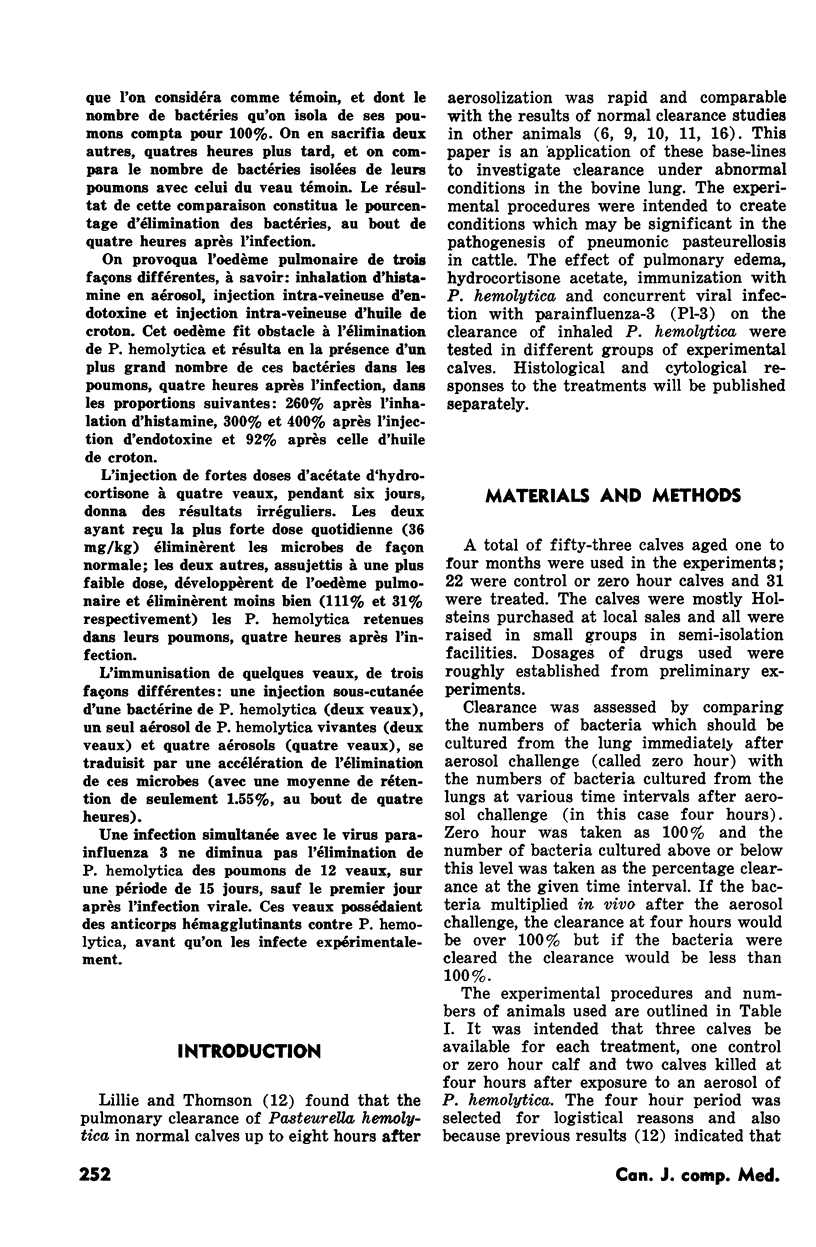
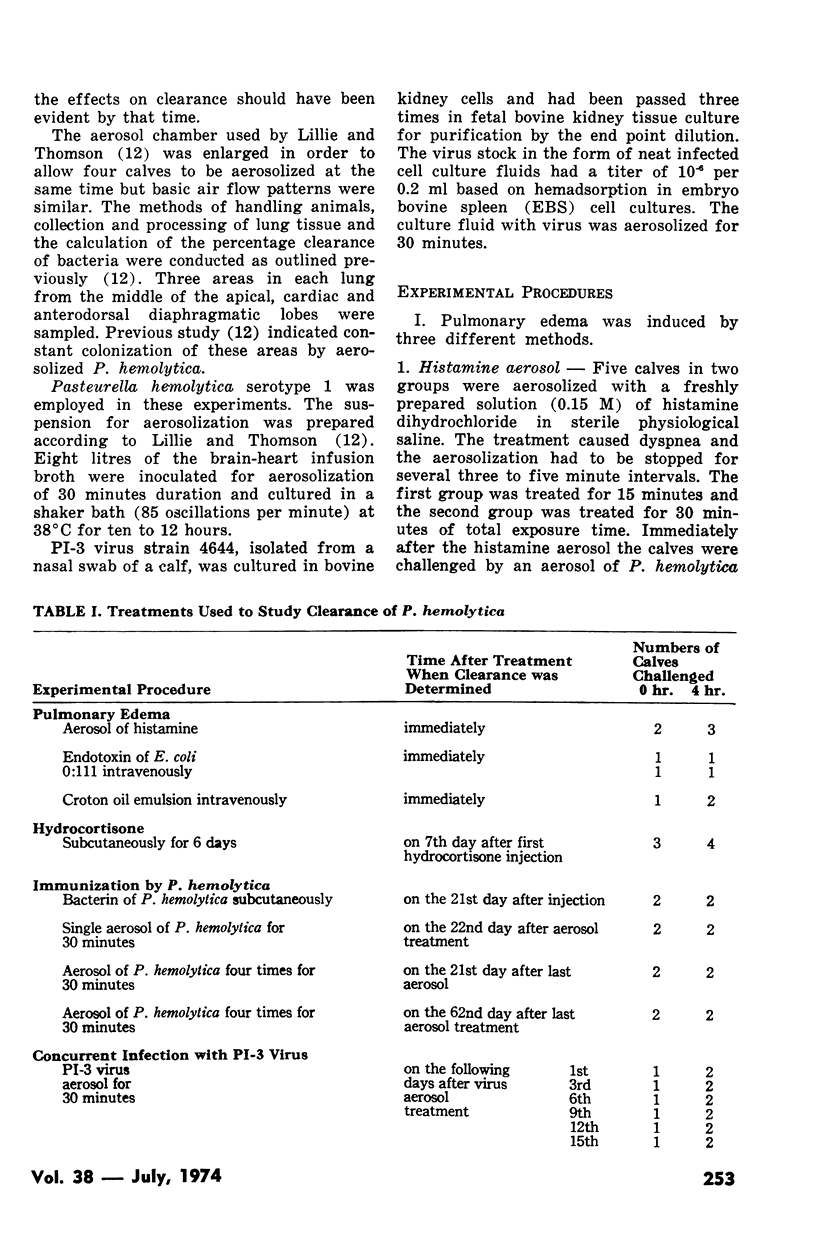
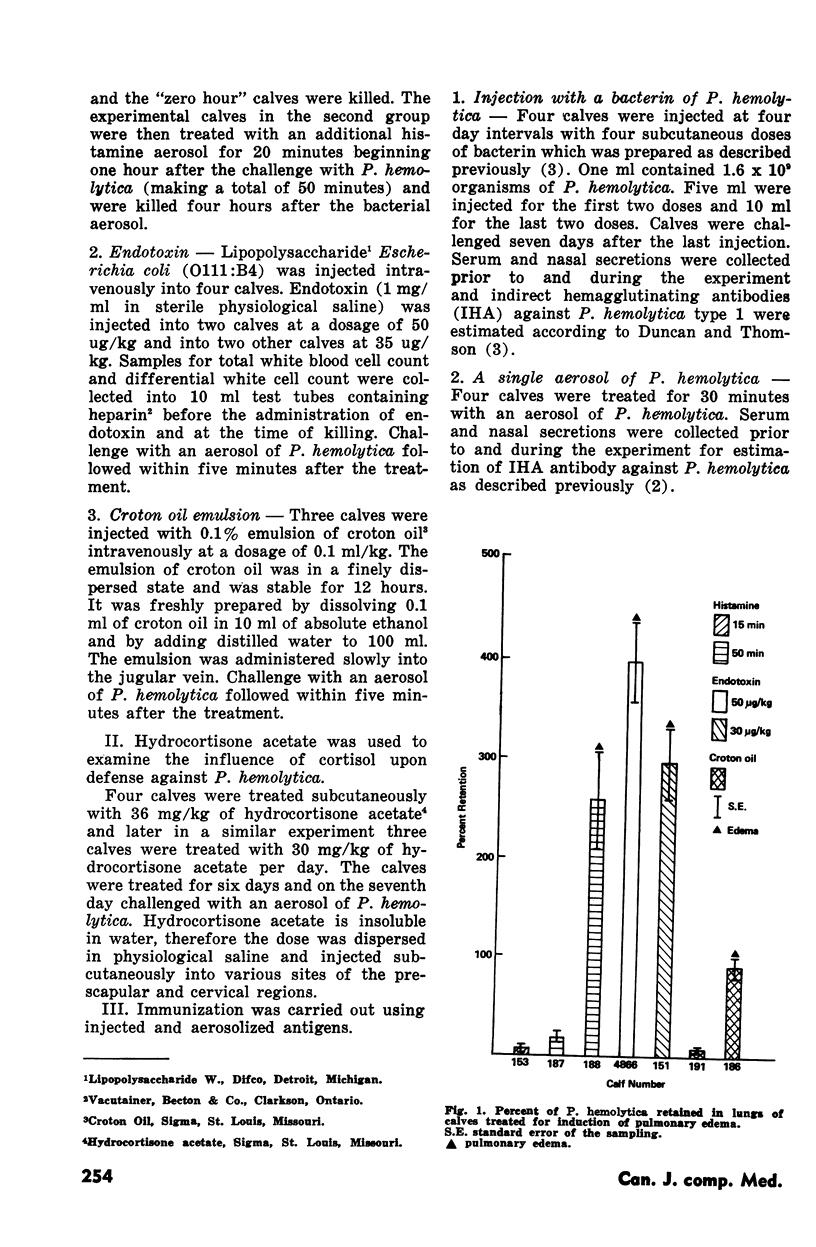
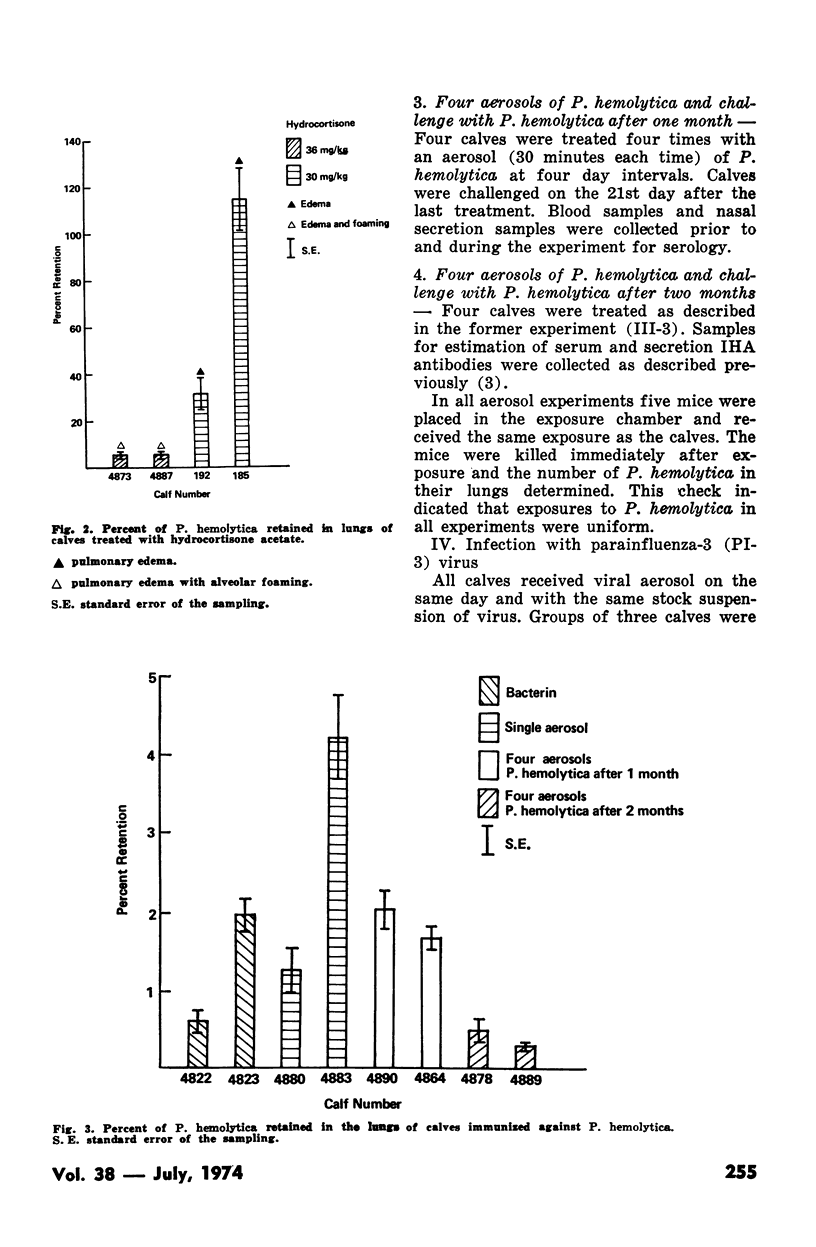
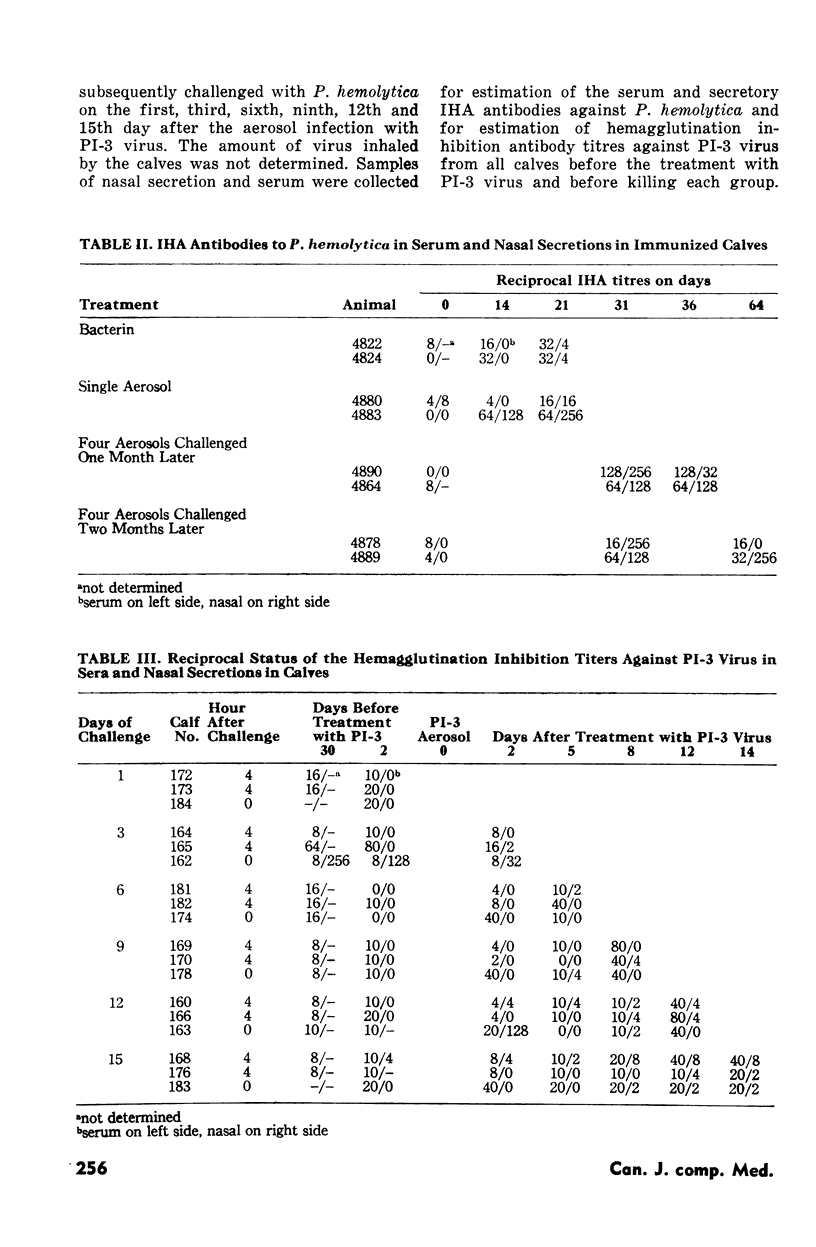
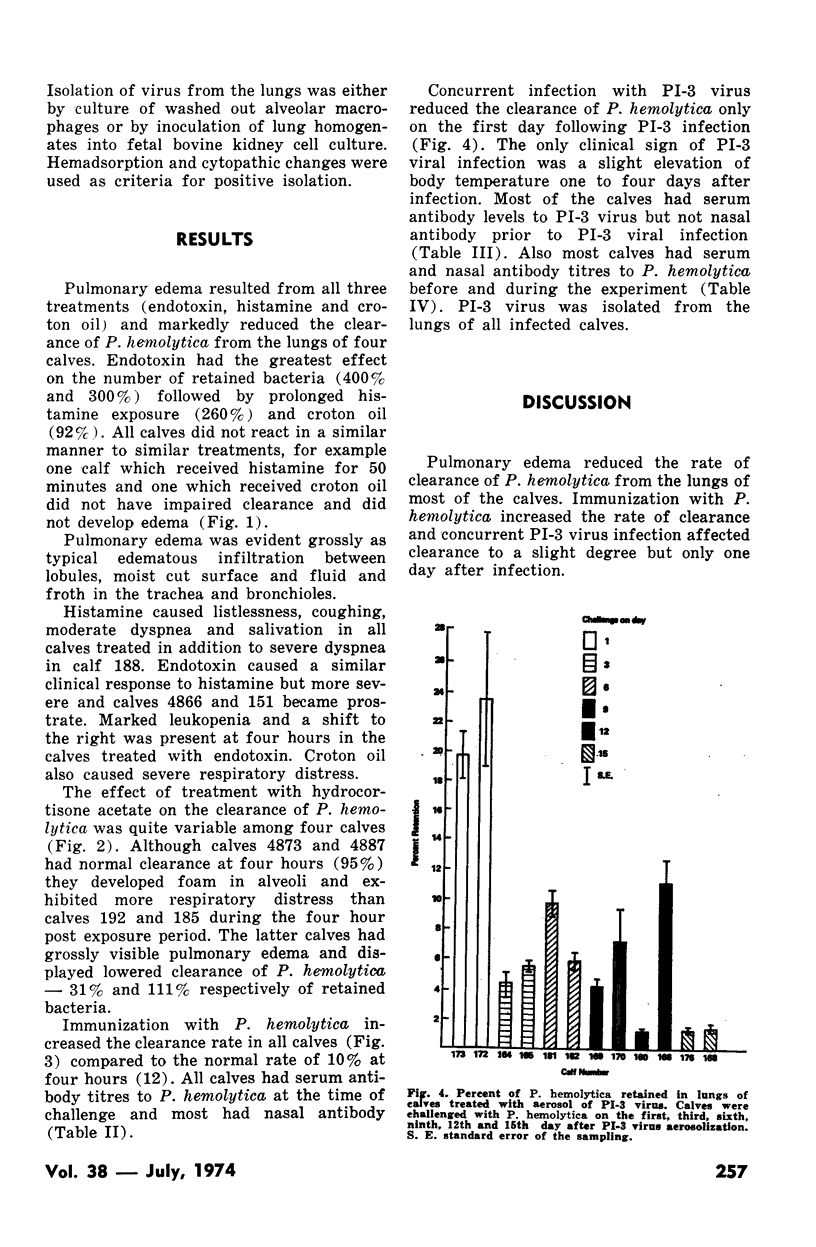
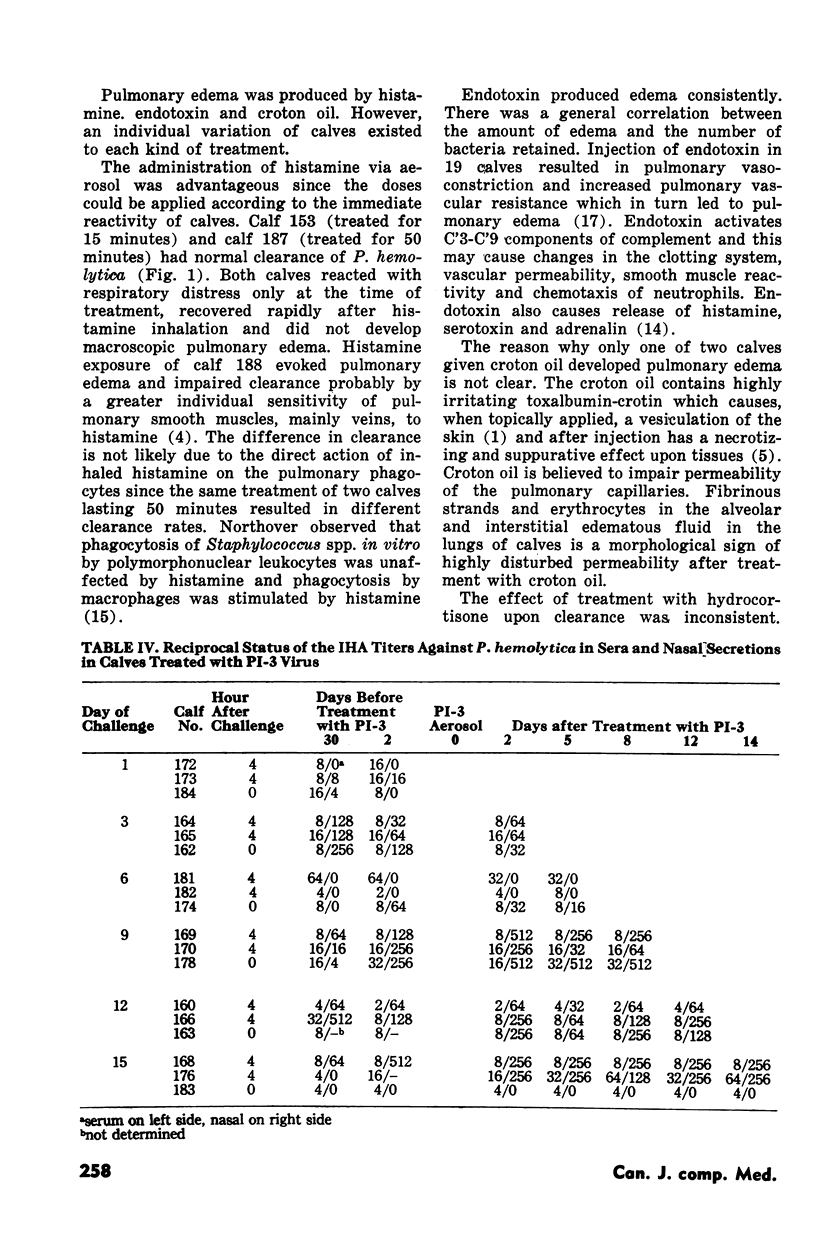
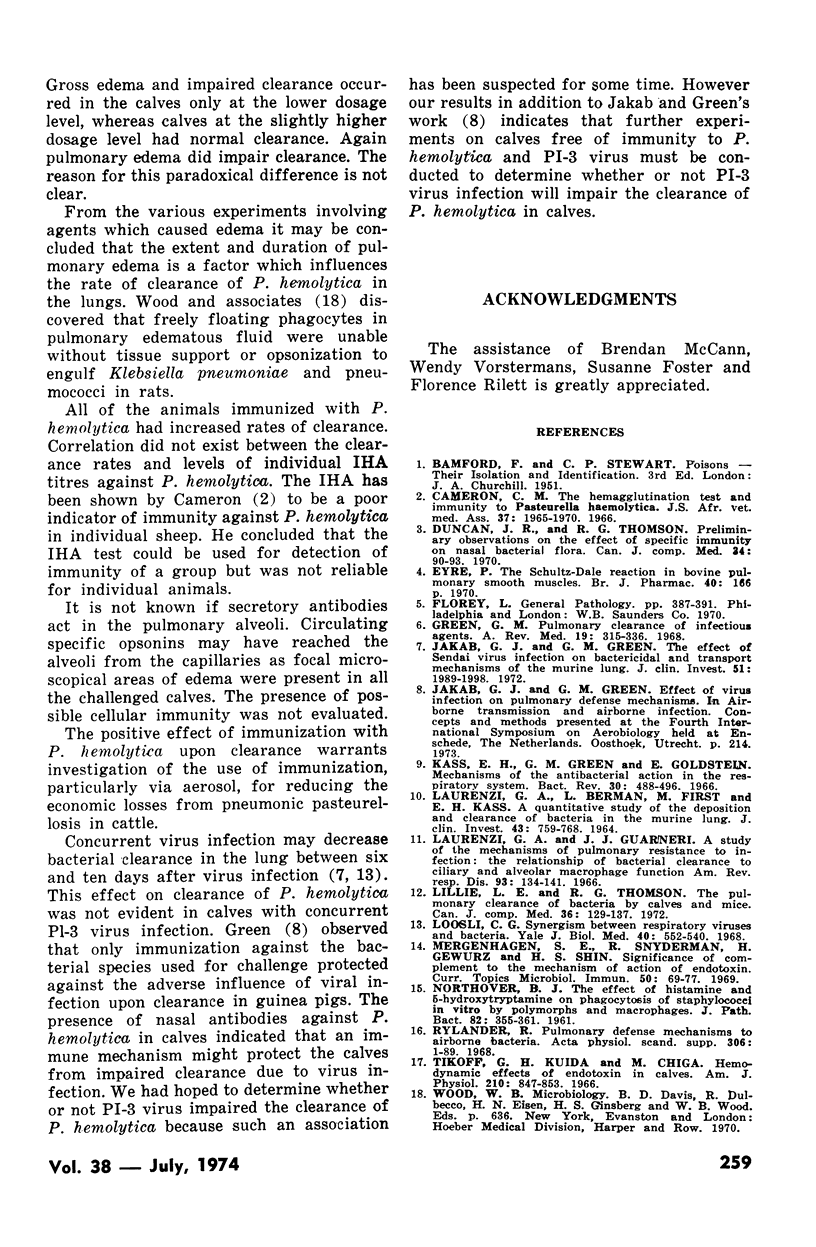
Selected References
These references are in PubMed. This may not be the complete list of references from this article.
- Duncan J. R., Thomson R. G. Preliminary observations on the effect of specific immunity on nasal bacterial flora. Can J Comp Med. 1970 Jan;34(1):90–93. [PMC free article] [PubMed] [Google Scholar]
- Green G. M. Pulmonary clearance of infectious agents. Annu Rev Med. 1968;19:315–336. doi: 10.1146/annurev.me.19.020168.001531. [DOI] [PubMed] [Google Scholar]
- Jakab G. J., Green G. M. The effect of Sendai virus infection on bactericidal and transport mechanisms of the murine lung. J Clin Invest. 1972 Aug;51(8):1989–1998. doi: 10.1172/JCI107005. [DOI] [PMC free article] [PubMed] [Google Scholar]
- Kass E. H., Green G. M., Goldstein E. Mechanisms of antibacterial action in the respiratory system. Bacteriol Rev. 1966 Sep;30(3):488–497. doi: 10.1128/br.30.3.488-497.1966. [DOI] [PMC free article] [PubMed] [Google Scholar]
- LAURENZI G. A., BERMAN L., FIRST M., KASS E. H. A QUANTITATIVE STUDY OF THE DEPOSITION AND CLEARANCE OF BACTERIA IN THE MURINE LUNG. J Clin Invest. 1964 Apr;43:759–768. doi: 10.1172/JCI104960. [DOI] [PMC free article] [PubMed] [Google Scholar]
- Laurenzi G. A., Guarneri J. J. Effects of bacteria and viruses on ciliated epithelium. A study of the mechanisms of pulmonary resistance to infection: the relationship of bacterial clearance to ciliary and alveolar macrophage function. Am Rev Respir Dis. 1966 Mar;93(3 Suppl):134–141. doi: 10.1164/arrd.1966.93.3P2.134. [DOI] [PubMed] [Google Scholar]
- Lillie L. E., Thomson R. G. The pulmonary clearance of bacteria by calves and mice. Can J Comp Med. 1972 Apr;36(2):129–137. [PMC free article] [PubMed] [Google Scholar]
- Loosli C. G. Synergism between respiratory viruses and bacteria. Yale J Biol Med. 1968 Apr-Jun;40(5-6):522–540. [PMC free article] [PubMed] [Google Scholar]
- Mergenhagen S. E., Snyderman R., Gewurz H., Shin H. S. Significance of complement to the mechanism of action of endotoxin. Curr Top Microbiol Immunol. 1969;50:37–77. doi: 10.1007/978-3-642-46169-9_2. [DOI] [PubMed] [Google Scholar]
- NORTHOVER B. J. The effect of histamine and 5-hydroxytryptamine on phagocytosis of staphylococci in vitro by polymorphs and macrophages. J Pathol Bacteriol. 1961 Oct;82:355–361. doi: 10.1002/path.1700820213. [DOI] [PubMed] [Google Scholar]
- Rylander R. Pulmonary defence mechanisms to airborne bacteria. Acta Physiol Scand Suppl. 1968;306:1–89. [PubMed] [Google Scholar]
- Tikoff G., Kuida H., Chiga M. Hemodynamic effects of endotoxin in calves. Am J Physiol. 1966 Apr;210(4):847–853. doi: 10.1152/ajplegacy.1966.210.4.847. [DOI] [PubMed] [Google Scholar]


